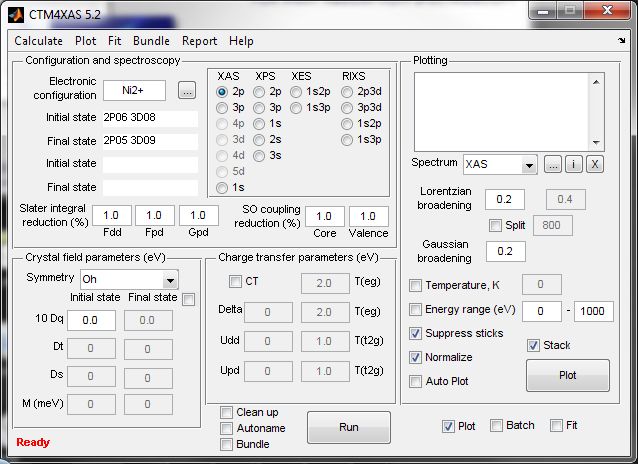CTM4XAS 5.2 features
New interface. Periodic table integration. RIXS input file calculations.

New CTM4XAS 5.2 interface
If you use CTM4XAS calculations, please cite E. Stavitski and F.M.F. de Groot, Micron 41, 687 (2010).
Purpose
The CTM4XAS program is intended as a general user-friendly program that can be used to simulate core level spectra. The program is not intended to compete with ab-initio multiplet codes that are being developed. References to the recent theory developments can be found in the micron paper.
As the source codes for the CTM4XAS calculations, we use the charge transfer multiplet program as developed by Theo Thole and modified by Haruhiko Ogasawara. As yet the CTM4XAS interface is limited to the XAS, XPS and XES spectra (including their circular dichroism) of transition metal systems. The CTM program itself can also be used for other elements and additional experiments such as Auger, resonant photoemission and RIXS spectra. The CTM4RIXS program for RIXS calculations is available in beta mode.
Theory background
Transition metal L edges can not be calculated with DFT based codes. The reason for this discrepancy is not that the density-of-states is calculated wrongly
in these codes, but rather that one does not observe the density of states in the 2p X-ray absorption process. The main reason for the deviation from the density-of-states is the strong overlap of the core wave function with the valence wave functions.
The Charge Transfer multiplet program is a semi-empirical program that includes explicitly the important interactions for the calculation of L edge spectra. This includes
(1) the core and valence spin-orbit coupling,
(2) the core-valence overlap (multiplet effects)
(3) the effects of strong correlations within the charge transfer model.